Articulation #6 – Fermata
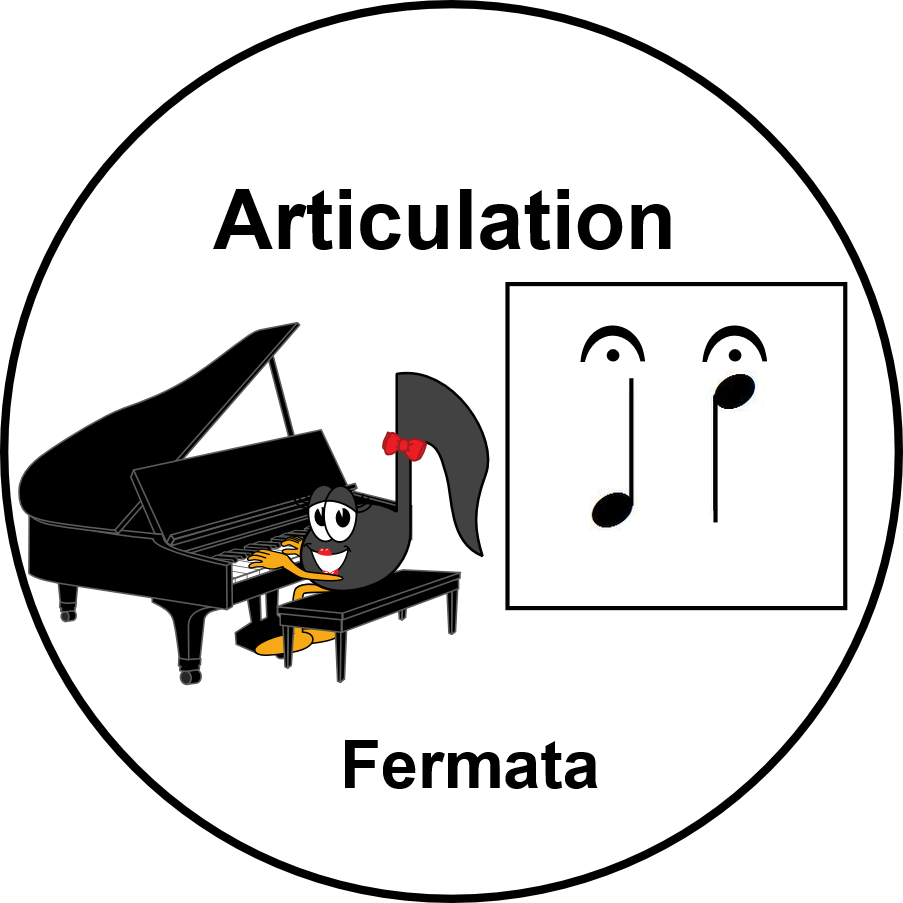
Articulation Signs tell us how to play a note. The Essential Dictionary of Music defines Articulation as "the manner in which notes are performed, such as staccato or legato".
In our Articulation Blog Series, we have explored:
- Articulation Blog Series #1 - Accent
- Articulation Blog Series #2 - Staccato
- Articulation Blog Series #3 - Staccatissimo
- Articulation Blog Series #4 - Marcato
- Articulation Blog Series #5 - Tenuto
In this blog, we will look at the Fermata.
The term "Fermata" means " pause; hold the note or rest longer than its written value". So how do you tell that a note or a rest is to be played Fermata?
In this Blog, we are going to explore the Fermata Sign - the Articulation Sign that tells us what notes or rests are to be held longer than their written value.
Did you notice that this is the only Articulation Sign in our Series that can also be used with a rest? Isn't that cool!
Articulation - Fermata
Dolmetsch.com defines Fermata as Italian for a musical symbol placed over a note or rest to be extended beyond its normal duration, and occasionally printed above rests or bar lines, indicating a pause of indefinite duration.
When a note, chord, rest or "bar line" is to be played Fermata, one Fermata Sign will be written above the note, chord, rest or bar line.
There are exceptions when the music on a staff is written using 2 separate voices (for example - Stems Up for Soprano and Stems Down for Alto). We will not be exploring those exceptions in this Blog.
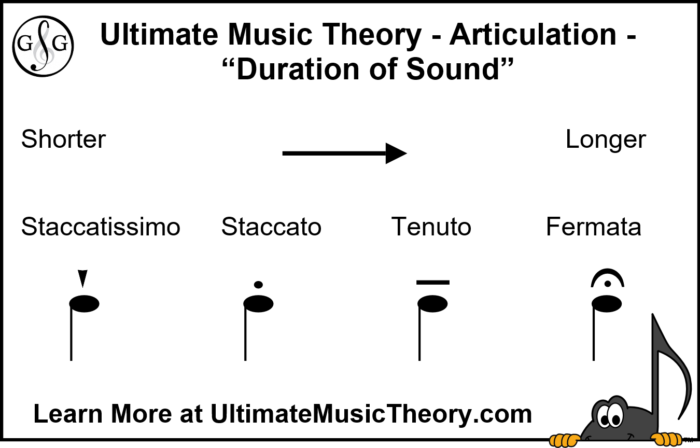
To explain the length of the Fermata (how long we "pause"), the Essential Dictionary of Music Notation states "A fermata over a note or chord not only indicates that the tempo is interrupted but that the note or chord is sustained.
The length of a fermata is determined by the performer and is relative to the musical situation. (For example, in a fast tempo, placed on a sixteenth note, the fermata would be a shorter value than if placed on a whole note, in a slow tempo.)".
The other Articulation Mark that indicated to sustain a sound is the Tenuto. However, the Tenuto means to hold or sustain the note/sound for the full value while the Fermata means to hold or sustain the note/sound/rest for longer than the given value.
The word duration refers to the length of time in which a note or rest is played. We have looked at 4 articulations that affect the duration of a note or chord: Staccatissimo, Staccato, Tenuto and Fermata.
Articulation - Fermata - How to Draw It!
So, how do we draw that Fermata Sign? I tell my Students that the Fermata Sign should look like an Eyeball.
The upper part of the Fermata Sign is the "eyebrow". It is a curved line (like a slur). It should extend just a bit longer than the notehead (centered over the notehead). It can be written a little thicker than the slur, or it can be written a little thicker (darker) so that it stands out. (We do not want to confuse the Fermata Sign eyebrow with a slur!)
The lower part of the Fermata Sign is the "eyeball". It is a dot (like a staccato dot). It should be placed inside and at the bottom center of the slur. Again, it is centered over the notehead. It is about the same size as the staccato dot.
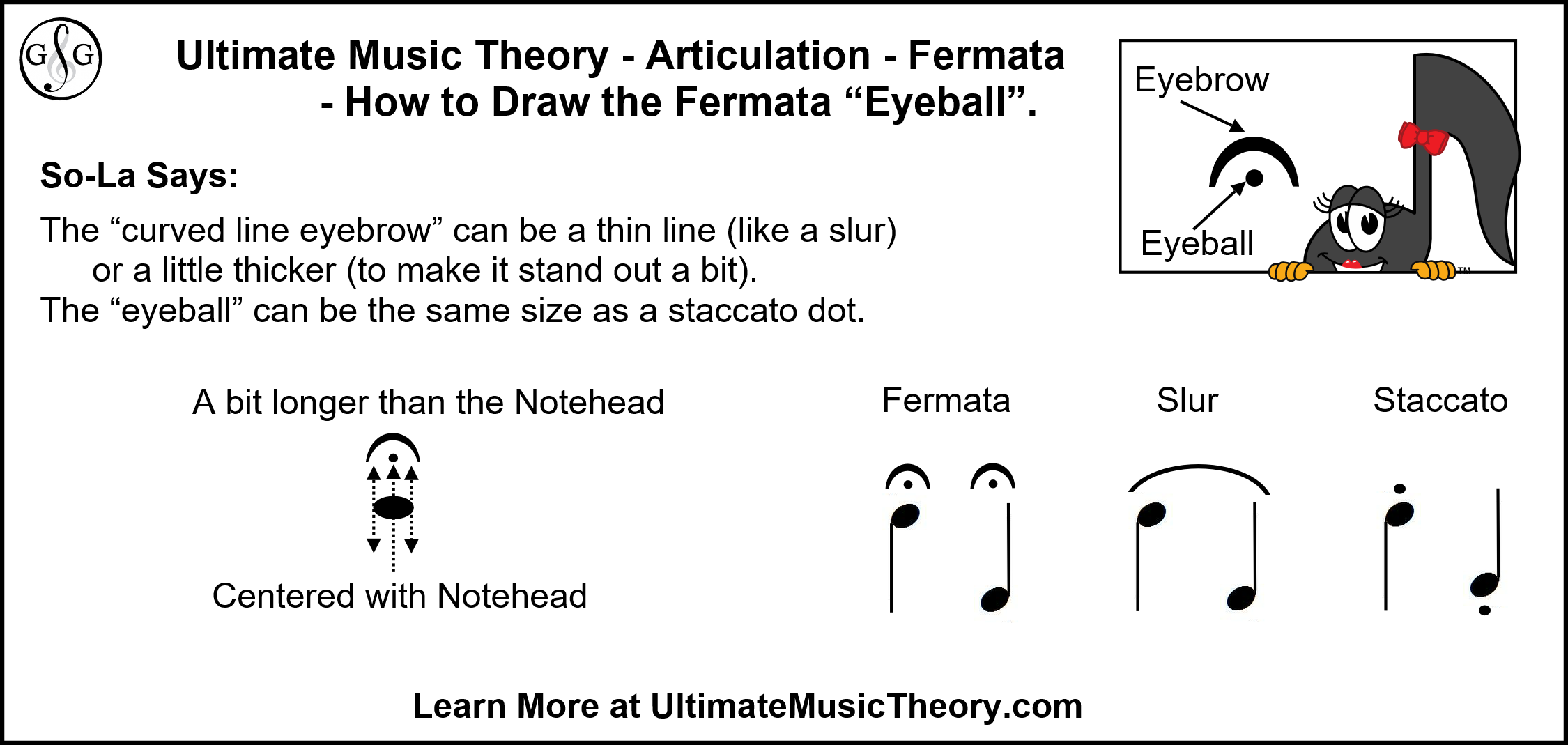
Articulation - Fermata - Proper Placement of the Eyeball!
The key to the placement of the Fermata "Eyeball" is to center that eyeball with whatever you are placing the Fermata over.
The Fermata is always written above the note, chord, rest or bar line (and above the staff!). It must be placed on the exact beat that is to be held (so that there is no confusion about what note/rest/chord or bar line is to be held).
If you are combining a Fermata with any other articulation signs or with slurs, the Fermata is always placed outside the articulation sign and/or slur (and above the staff!).
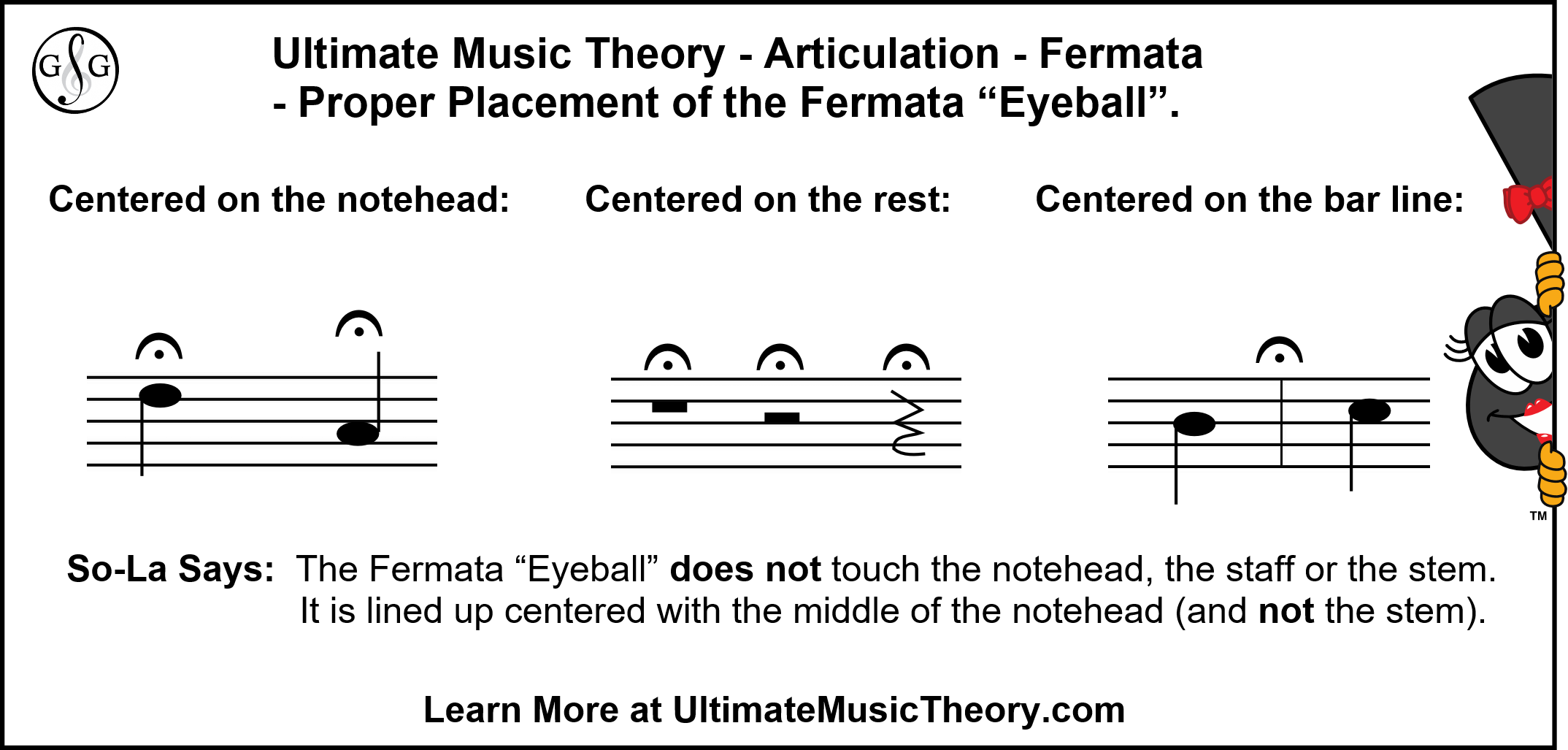
The Fermata is introduced in the Ultimate Music Theory Prep 1 Rudiments Workbook. The Prep 1 and the Prep 2 Rudiments Workbooks are the perfect match for Students who are starting in a Nationally Recognized Repertoire Program (such as the RCM).
For Students who will be continuing on to Theory Exams or who want to learn how to compose music with a proper foundation, use the Prep 1 Rudiments Workbook with the Supplemental Level Workbooks! The Prep 1 Supplemental Pack + Answer Books is a fantastic deal. Keep the Answer Books for yourself and sell the Workbooks to your Students.
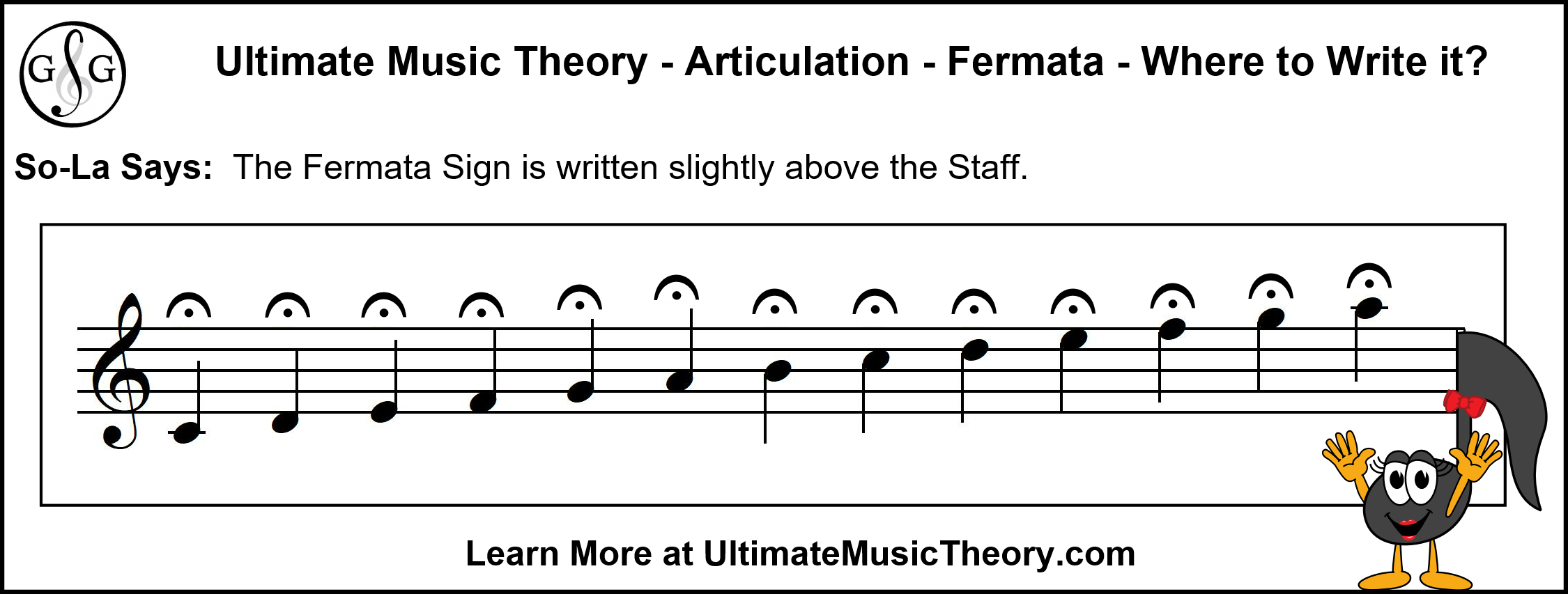
Articulation - Fermata - Common Placement Boo-Boos.
Again, please remember that it is okay to expect our Students to place or write the Fermata properly!
Here are my Top 5 Placement Boo-Boos when I mark my Student's work:
- The Fermata sign is written inside the Staff. Remember, with the exception of music written with 2 parts sharing a staff, the Fermata is written above the Staff.
- The Fermata "Eyeball" is centered over the stem. Remember that it is always centered over the notehead.
- The Fermata Sign is written WAY too big or it is written WAY too small. No, you don't need to measure it. Just use your "eyeballs" to make sure the Fermata Sign looks to be just a tiny bit bigger than the notehead. (It is acceptable to have it the same size - width - as the notehead too.)
- The Fermata Sign is written below the Staff or it is written upside-down. Remember - eyebrows are above our eyes! The curved Fermata Slur has to be written above the Fermata Dot.
- The Fermata Dot is written touching the notehead. That is a no-no! The Fermata is not a hat. It doesn't sit on a notehead.
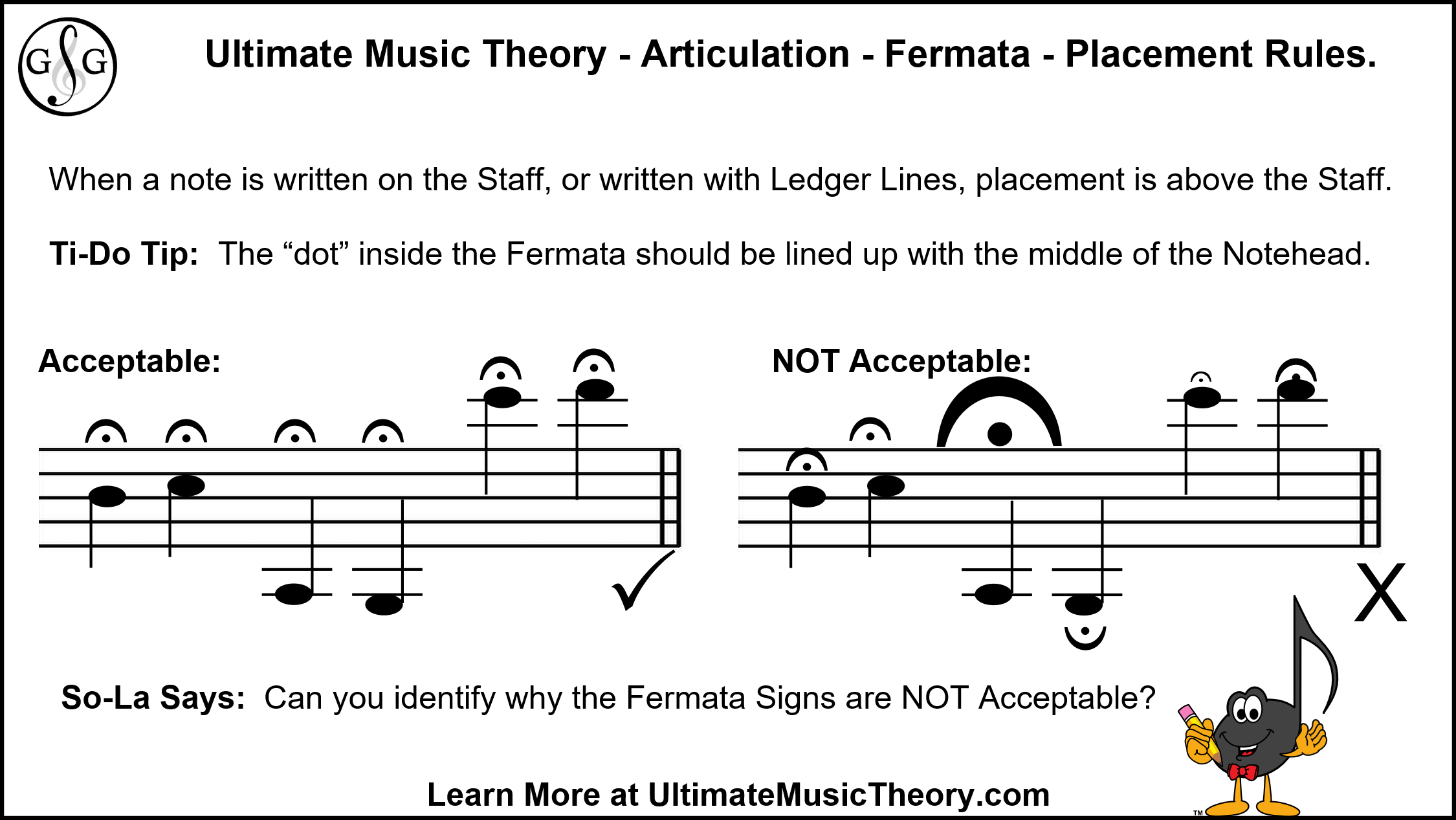
Articulation - Fermata - Need Worksheets?
Have you checked out the Ultimate Music Theory Membership yet? As part of your Membership, you will be able to print two corresponding Worksheets for this Blog.
The first Worksheet is Articulation - Add the Stems and the Fermata Signs. The second Worksheet is Articulation - Ledger Lines, Stems and Fermata Signs. Both Worksheets have Answer Sheets to make your marking super easy!
And remember, the only way to access these Worksheets is to have an Ultimate Music Teachers Membership.
Ultimate Music Teachers Membership
♪ LEARN ♪ PLAN ♪ TEACH ♪ GROW
The One & ONLY Ultimate Music Teachers Membership
To Become A UMT PRO!
Your Success Path Starts Here - Go To TeachUMT.com Today!
Keep on Learning... With a Smile and a Song!
Shelagh McKibbon-U'Ren
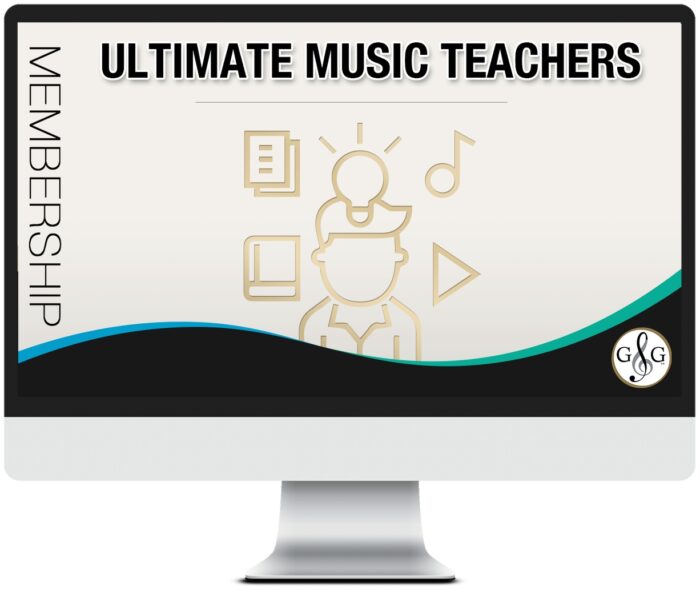


If there are two voices on a staff, fermatas applied to the 2nd voice are, indeed, written upside-down & below the affected note value. See Bach chorales…
Correct. That is why this statement is at the beginning of the Blog:
There are exceptions when the music on a staff is written using 2 separate voices (for example – Stems Up for Soprano and Stems Down for Alto). We will not be exploring those exceptions in this Blog.
Shelagh